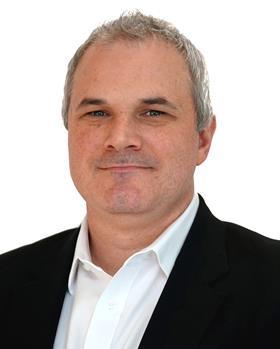Will Grass Valley’s fourth owner in the last two decades skyrocket the company mission to champion software technology and cloud services? IBC365’s Alana Foster speaks with industry analysts to probe the acquisition.

When news broke last year of Belden’s plans to divest its live media business, and a subsequent plan announcing a cost reduction program to save $40 million annually, the company’s strategic review required a buyer to take over.
In February of this year, it was confirmed the entirety of Grass Valley would be acquired by a private equity firm led by former Avid chief executive Louis Hernandez, with the aim to accelerate the business into a cloud-based technology leader.
Following the receipt of regulatory approvals and other closing conditions, the transition will enable Grass Valley to refocus its investment plans in workflows that are flexible, software and cloud native, and will fundamentally enhance customer opportunities, according to its president Tim Shoulders.
At the forefront of industry change, the shift in business strategy makes for the right time for the firm to streamline decision making and to implement smarter decisions.

In an interview earlier this year with IBC365, Shoulders explained the transition and overall decision making going forward will make its customers best interest as a primary focus. He emphasised that no “dramatic shift in focus of the company or reengineering,” would take place under Black Dragon’s ownership but added it would be a “responsible change that will be positive.”
The surprise acquisition has been discussed at varying levels from the role former Avid boss will play in the day-to-day operating of the company to the overall impact on the broadcasting industry as a traditional manufacturer of television production and broadcasting equipment forays into the cloud and SaaS solutions.
Devoncroft president Joe Zaller tells IBC365 the nature of Grass Valley’s business as “one of the largest pure-play suppliers in the media technology sector, matters to Grass Valley’s customers, partners, distributors, competitors and their employees.
“At first glance, the transaction seems relatively straightforward, but like all M&A events the devil is in the detail.”
The deal compromises of four components to the financial terms, these include:
- An upfront payment (from Black Dragon Capital to Belden) of $140 million
- A Seller Note for $213 million
- Up to $130 million of PIK (paid in kind) interest
- $150 million in potential earn-out payments
Zaller explains: “While the deal is not as straightforward as it would be if Black Dragon Capital was paying 100% cash, the terms set out above have been clearly listed and all relevant parties understand the structure of the transaction.”
Previously, Shoulders explained that whilst Belden would be selling the entirety of the Grass Valley business it would continue to provide essential back end office support throughout the transition.
Once Grass Valley is separated from Belden “it will have a pre-agreed amount of working capital in the business,” Zaller adds, admitting he doesn’t know the exact amount but he estimates it at around $20 million.
Analysing the impact
A deal which is not quite black and white and a traditional company shifting its business focus to cloud and SaaS services in order to meet customer demand, makes it tricky to survey the impact, notably as the deal has not been entirely finalised.
Zaller says: “There are a good number of M&A transactions in any given year, but this one is significant because Grass Valley is a major industry player.
“The company’s products and services are central to the way many broadcasters and media companies work every day, so it stands to reason that Grass Valley’s customers would want to know that the company is going to be there for them now and in the future.”
If Grass Valley was acquired by an existing industry player or one of its competitors, the impact may have been different. However, the acquisition from private equity firm Black Dragon has opened up a series of questions across the industry.
Black Dragon is headed by former Avid boss who was sacked from the firm in March of 2018 for workplace misconduct.
At the time, Avid said: “After reviewing the findings of the Special Committee’s investigation, the Board of Directors unanimously concluded that the findings warranted immediate termination of Mr Hernandez’s employment.”
Black Dragon and Grass Valley issued statements at the time of announcing the transaction with both pointing to ‘business as usual.’
Omdia associate director, research and analysis, service provider technology Andrew Young tells to IBC365 the merger “isn’t that ground breaking in itself” pointing to Grass Valley’s series of ownership overhauls, however, he adds: “If they are successful in their ambition to transition to cloud based services then the deal could prove very profitable for Black Dragon.”
Reaching for the cloud
As Grass Valley accelerates into becoming a cloud-based and SaaS technology leader, the market is quickly becoming crowded.
Young predicts: “Grass Valley will heavily rely on the new ultra-low latency edge solutions that have appeared in the last 12 months to provide its SaaS solutions. SaaS for live and near live applications is still quite young and will likely grow with the growing adoption of edge CDN networks.”
At the time of announcing it would divest the Grass Valley business, Belden chief executive John Stroup described the broadcast business as being “lumpy” and “volatile” as well as difficult to predict which he said can cause unwanted surprises for investors.
Black Dragon ought to be prepared, Young says: “It is significant in that Grass Valley has an owner that seems ready to provide the sustained investment and tolerate the near-term losses involved with their ambitious transition to a cloud based service provider.”
Historically, divestments in the broadcast industry have allowed for radical shifts in business priorities and core functionality services for customers.
“The most recent examples are Synamedia’s 2018 divestment from Cisco, which resulted in a more focused portfolio and MediaKind’s 2019 divestment from Ericsson, which gave the firm much needed breathing room to pursue a more iterative cloud-based portfolio,” Young adds.
With NAB now cancelled due to the coronavirus pandemic sweeping the globe, Grass Valley and its new owner Black Dragon will not have an immediate platform to showcase the new business.
In a press release issued before the announcement of the event cancellation, Grass Valley teased it would “unveil solutions that harness IP and cloud computing to deliver game-changing developments and lead the industry’s charge towards a software-based future.
“New cloud-native solutions will be introduced to the market that drive greater flexibility and efficiency in live production environments, alongside a raft of virtualised systems that leverage commodity hardware.”
PP Foresight analyst Paolo Pescatore told IBC365: “There is no doubt the new entity is far stronger given its combined portfolio. Integration and being able to execute on a clear plan will be paramount.
“While, it is saying all the right things it is going up against some established and credible providers especially in the cloud space. Even the likes of Google is struggling to compete with AWS.
“For sure owning more pieces in the value chain puts in a stronger position to offer numerous services to broadcasters.”
While traditional businesses have been hesitant to transform their processes, Grass Valley has adapted and harnessed the opportunities new technologies provide to cater to its customer requests and change in journey from hardware to software-based services.
Pescatore adds: “These are not new opportunities as the notion of transformation driven by IP has been a central theme in the industry for a few years now.
He adds: “There are still too many providers chasing too few companies. More consolidation lies ahead throughout the value chain.”
- Read more M&A: Vendor consolidation continues
Futuresource research analyst Chris Evans was not permitted to discuss the Grass Valley acquisition specifically due to a research NDA in place and a conflict of interest. However, Evans outlines general industry trends likely to influence the state of the market and the future of the acquisition in general.
He says: “There is a clear demand from the production industry for more flexible and agile systems. Virtualisation continues to be an attractive means to reduce the physical footprint of equipment whilst also providing the scalability to grow.
“Cloud based solutions have been a catalyst that has enabled the development of more innovative production workflows. Products that facilitate the decentralisation of operators and equipment will be sought after.
“There will continue to be an appetite from end-users for new products that create efficiencies and cost savings in the way that content is created.”
What’s next?
The SaaS business model will be crucial to help protect revenues as the broadcast industry becomes less dependent on owning dedicated hardware.
Evans explains: “Companies with advanced SaaS product offerings may very well be being eyed by some of the bigger players as acquisitions. Although, owning a product portfolio that offers a complete end-to-end solution may be less urgent compared to previous years as end-users are more reluctant to lock themselves into single vendor solutions.”
Young points to Imagine Communications “as a good proxy” for what the industry can expect from Grass Valley as Imagine is roughly two to three years ahead of Grass Valley’s ambition.
He says: “Expect Grass Valley to announce that they will support all legacy equipment while they pursue this new strategy. Once they have put traditional clients at ease they will have to decide on which technology stack to use.
“I expect they will avoid creating their own proprietary technology stack and instead deploy their apps on top of current platforms and cloud as a service offering.”
Young predicts two major trends to impact the industry throughout 2020 – a further growth in live and a squeeze in margins.
On the growth he explains: “From the reduced cost of capture and distribution, inviting niche content creators into the space while premium live events continue to be a battleground for major broadcasters and the testing ground for broadcast innovations.”
These include 4K, 8K, picture in picture, hybrid delivery, interactive statistics.
As well, with more players than ever before in both the content space and technology space, margins and budgets are tighter than ever.
He adds: “Across the value chain there is a race to avoid commoditisation. The safety of scale is open to only very few vendors.
“As a result, monetisation solutions will come to the fore and we are will likely to see growth in ad funded content and the technologies that enable it.”
Young adds: “Emergency measures to reduce the spread of coronavirus have forced companies in the affected countries to adapt quickly.
“Companies running on cloud-based services are able to be more reactive in scaling down operations and cost as productions have been forced to downsize or shut down.
“The takeaway for many will be that cloud solutions and SaaS will equip them better to respond effectively to sudden change in the content supply chain in the future.”
























No comments yet